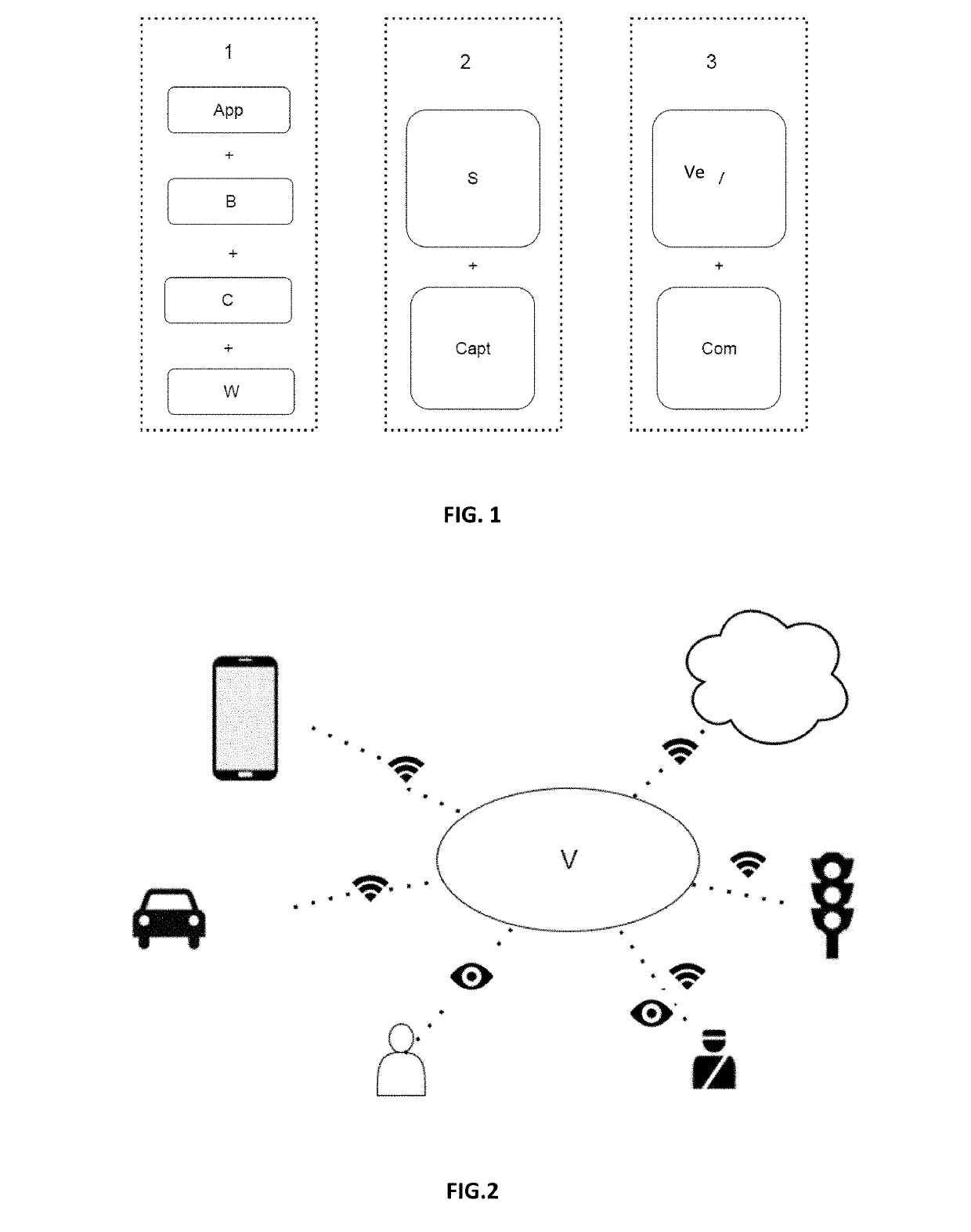System for the dynamic determination of the environmental footprint linked to the overall mobility of a user
- Summary
- Abstract
- Description
- Claims
- Application Information
AI Technical Summary
Benefits of technology
Problems solved by technology
Method used
Image
Examples
Embodiment Construction
[0054]The invention transforms the current traffic restricting device which is based on “static” stickers which solely accounts for the technology of the vehicle, into a connected sticker which is also capable of capturing the usage and behavior of the driver. The dynamic system for determining pollution emissions in accordance with the invention can be used to return the driver to the center of improving air quality by making the driver aware of the driver's impact and inciting the driver to improve.
[0055]Specifically, this means that the air quality certificate is dynamic and can vary as a function of the driver's usage. The usage, which is taken into account, may be at least one of style of driving (aggressive or smooth driving) and the modes of transport employed, in particular in order to favor soft modes of transport for short journeys.
[0056]FIG. 1:
[0057]As can be seen in FIG. 1, the function of the connected sticker (V) allowing pollution emissions to be determined for real u...
PUM
 Login to View More
Login to View More Abstract
Description
Claims
Application Information
 Login to View More
Login to View More - R&D
- Intellectual Property
- Life Sciences
- Materials
- Tech Scout
- Unparalleled Data Quality
- Higher Quality Content
- 60% Fewer Hallucinations
Browse by: Latest US Patents, China's latest patents, Technical Efficacy Thesaurus, Application Domain, Technology Topic, Popular Technical Reports.
© 2025 PatSnap. All rights reserved.Legal|Privacy policy|Modern Slavery Act Transparency Statement|Sitemap|About US| Contact US: help@patsnap.com

